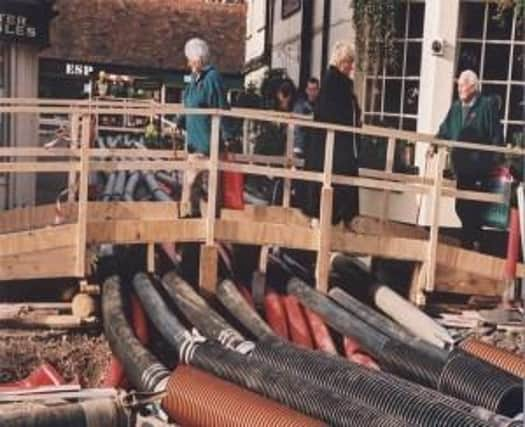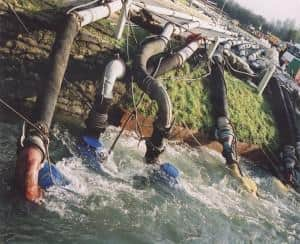Chichester floods: A look back at how Chichester saved itself from flooding


In 1994, widespread flooding resulted when the capacity of the culverts was exceeded and the River Lavant burst its bank causing the ‘worst flood seen in 130 years.’
Firefighters were once again called in after a significant increase in rainfall caused the River Lavant to burst its banks, submerging The Hornet and New Park Road.
Advertisement
Hide AdAdvertisement
Hide AdWestgate Centre, which was used as an evacuation point in case of natural disaster, was surrounded by ‘a lake’, Goodwood Airfield was swamped and neighbouring towns and villages, including Bosham, Fishbourne, Lavant and Singleton, were all under water too.
Following on from this, during early November 2000, low lying areas throughout the U.K. were put on flood alert. Local Authorities, The Environment agency and latterly The British Government were forced to implement contingency plans to both prevent and alleviate the effects of flooding.
In West Sussex, the Local Authority decided that an attempt should be made to prevent the town of Chichester from flooding.
On December 4, 2000 construction commenced in three packages costing a total of £1.3 million, with a programme to complete all but the main rail crossing before Christmas. However, further bad weather intervened, and the partially completed works were brought into use carrying floodwater less than two weeks later. In the New Year the rail crossing was constructed during a weekend possession.
Advertisement
Hide AdAdvertisement
Hide AdThe alternative entailed setting up one of the largest “over-pumping” projects ever attempted in the U.K.


Hydrainer Pump Hire were selected to supply and supervise the installation of the pumping equipment, a project which entailed installing circa 50 pump sets, installed at strategic sites around the town mainly focused on removing flood water from the river Lavant and pumping it in stages to the sea, some 30 kilometres away.
The operation required the provision of massive temporary pipelines, installed by the British army and local fire brigade under the supervision of Hydrainer personnel. The project lasted for five months, and was a total success.
The project was such a success that the British prime minister personally visited the site to congratulate all those involved in the operation.